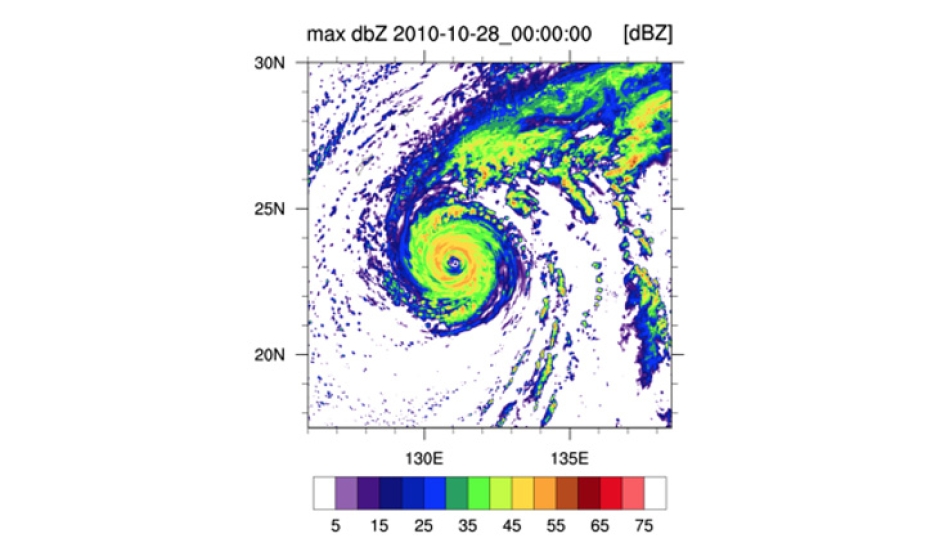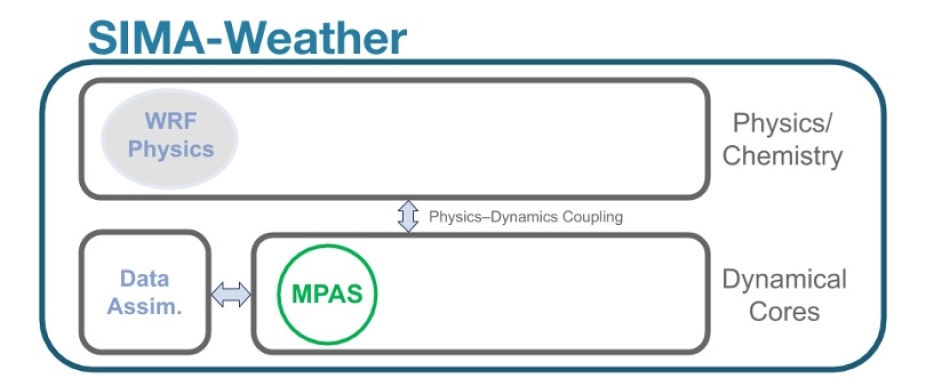Tropical Cyclone Predictability
What is the predictability of tropical cyclone (TC) formation from short (1-day) to extended (30-day) time scales?

Simulated radar reflectivity of Typhoon Chaba (western Pacific) from a global MPAS simulation using a 3-km mesh
To understand the predictability of TCs, it is necessary to understand not only TC development processes, but also the mechanisms active in the connections of TCs, the ocean surface, and the larger-scale circulation. The dynamics at play reflect atmosphere, ocean, and land processes, as well as interactions across a range of scales. Examples of the latter are those of storm convection and the wider circulation, of ocean–atmosphere exchange, and of the influence of Saharan dust on convection in radiative and microphysical processes.
In this SIMA application, a convection-permitting atmospheric model (Δx < 5 km) incorporating aerosol–cloud–atmospheric interactions and an eddy-resolving ocean model (Δx < 1/12 degree), will produce detailed simulations of TCs and their earth-system effects. Such a setup will have high resolution over a target TC basin, such as the western Atlantic. And, linking SIMA with data assimilation systems for enhanced initialization will improve the tool for studying physical processes in the tropics and can identify paths to advancing physical parameterizations for tropical weather modeling. The scientific results will also help address longer-timescale questions related to the role of TCs and to the character and predictability of TCs in future climates.

SIMA schematic for weather applications with a configuration of the MPAS non-hydrostatic dynamical core, WRF physics, and a data assimilation capability. Such an atmospheric model setup would be coupled to an interactive ocean model
Configuration
- 3-km refined mesh over E. Asia, coupled ocean model, initialized with DA
- Features: CAM/CESM running MPAS dynamical core, modified CAM6 physics